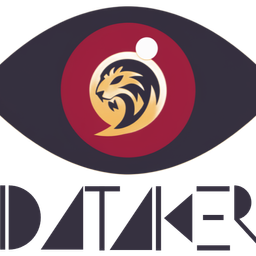Datadog Mastery: Infrastructure

Welcome to the Datadog Mastery series—a collection of hands-on tutorials designed to guide you from your first Agent installation to advanced monitoring strategies. Whether you’re new to Datadog or looking to deepen your expertise, these videos and blog posts will give you practical knowledge and pro tips to get the most out of your observability setup.
I01 - Datadog Agent and Integrations
Kick off your Datadog journey by learning how to deploy, configure, and manage the Datadog Agent. Understand how integrations extend Datadog’s capabilities.
🎬 Video:
- Deploy your first Datadog Agent
- Configure the Agent
- Manage and troubleshoot the Agent with common commands
- Deploy your first integration
I02 - Installing the Agent on Kubernetes
I02.1 - Getting Started with Kubernetes
Learn how to deploy the Agent in Kubernetes environments using Helm and the Operator.
🎬 Video:
- Deploy the Agent with Helm
- Deploy the Agent with the Operator
- Collect data from your first Kubernetes integration
I02.2 - Deep Dive: Advanced Kubernetes Monitoring
Explore cluster-level observability features and tools tailored for Kubernetes workloads.
🎬 Video:
- Datadog Cluster Agent
- Cluster Checks
- Container-level monitoring
- Kubernetes search and the Orchestrator view
I03 - Tagging and Best Practices
Set up meaningful tags to drive organization, cost tracking, and ownership clarity.
🎬 Video:
- Applying env, service, version, and ownership tags
- Leveraging tags for cost allocation and search
📖 Blog: Correlation: The Foundation of Good Observability
Learn how tagging and data correlation streamline root cause analysis during critical incidents.

I04 - Cloud Provider Integrations
Discover how to integrate AWS, Azure, and GCP into Datadog and use tagging for cost optimization.
🎬 Video:
- Setting up integrations for major cloud providers
- Tagging strategies for cost visibility
📖 Blog: Datadog Cloud Integration: Setup and Cost Optimization
Monitor everything in one place and keep cloud spend under control.

I05 - Leveraging Observability Data
Explore how far Agent data can take you—from host maps to ownership-driven dashboards.
🎬 Video:
- Host-level insights and host maps
- Dashboards powered by integration data and ownership tags
I06 - Dashboarding
Design clean, powerful dashboards that drive action—not confusion.
📖 Blog: Datadog Dashboards: Dive into Masterful Dashboard Design
🎬 Video:
- Dashboarding principles and techniques

I07 - Monitoring
Avoid alert fatigue with smarter, noise-resistant monitoring strategies.
📖 Blog: Get the Signal, Skip the Noise: Expert Tips for Datadog Monitoring
🎬 Video:
- Best practices for monitor configuration and alert tuning

I08 - Managing Secrets
Securely handle sensitive credentials in Datadog Agent configurations.
📖 Blog: Securely Managing Secrets in Datadog Agent
🎬 Video:
- Using secrets management in standalone and Kubernetes setups

I09 - Troubleshooting Tips
Break down deployed agents and explore debugging tools and techniques.
🎬 Video:
- Overview of agent components
- Useful debugging commands
I10 - Proxy Installation
List the various places to set a proxy and ensure the traffic reaches Datadog in environment with strict network policies.
🚀 Stay Tuned
This is just the beginning. I’ll continue adding deep-dives, advanced use cases, and real-world scenarios. Have a suggestion or request? Reach out on LinkedIn or leave a comment below.
👉 Follow the Dataiker blog and our Dataiker Youtube Channel for more tutorials and guides.





